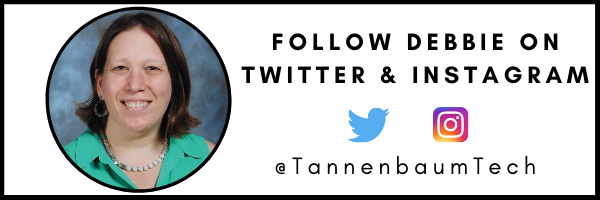In This Post
- Shifting towards a practice that promotes student agency- even with young learners!
- Using icons to promote student understanding.
- Video usage to empower students to work at their own pace!
If you have ever tried to teach a lesson with our littlest learners using technology, you know it can be a difficult task. In my school district, all of our students grades K-12 have need to login with both a username and a password. Usernames are 7 digits and passwords have to be at least 5 characters. This proves to be a challenge for my littlest learners, especially my kindergarteners who are still learning their letters, not to mention where those letters are on a keyboard.
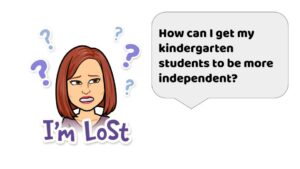
Last year, when I started working as a technology specialist, I taught all classes 30 minutes a week. Three of those classes were kindergarten. Even with an assistant, I would be utterly exhausted after my kindergarten lessons. It was like playing Whack-A-Mole. The minute I helped one student, another two or three popped up. It was frustrating to say the least, but I wasn’t sure what to do.
One November morning, while driving to work, I heard Vicki Davis interview Pana Asavantana about how she enabled her kindergarteners to use iPads more effectively on the Ten Minute Teacher Podcast. Like myself, she had originally struggled with the constant need for help. She then explained an important realization. Just like she used phonics to teach decoding, she realized that teaching her students icons could help them. She then embedded these icons in her instruction, which helped her students become more proficient and independent using technology.
Our students today are visual learners. They watch videos on YouTube to learn new things. They communicate with emojis. Why not capitalize on these strengths as we empower our students to be problem solvers? Share on XUsing Icons to Promote Agency
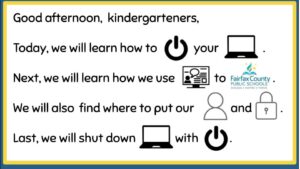 This idea inspired me! I got to work that morning and sent Pana a direct message on Twitter. She shared her video talk about this. All of a sudden, I knew what to do. The next day, I started teaching my kindergarteners icons one at a time. Each session, we would review the icons already we knew and add new ones to our learning. This would all be shared in a “morning message” like format.
This idea inspired me! I got to work that morning and sent Pana a direct message on Twitter. She shared her video talk about this. All of a sudden, I knew what to do. The next day, I started teaching my kindergarteners icons one at a time. Each session, we would review the icons already we knew and add new ones to our learning. This would all be shared in a “morning message” like format.
Suddenly, things started to change. My students were looking at the Smart board to see what to do next, rather than just asking me. They were developing strategies to promote independence.
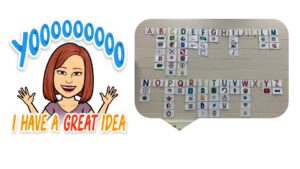 Then, another idea hit me. What if I created a word wall using these icons? The kindergarten students loved this. Un fact, my older students noticed too. If it worked for my littles, would it work for my older students?
Then, another idea hit me. What if I created a word wall using these icons? The kindergarten students loved this. Un fact, my older students noticed too. If it worked for my littles, would it work for my older students?
Of course it did. I started seeing the world in icons and using them to plan all of my lessons. The idea that teaching my students icons made their learning more sticky resonated with me so much that I even named my website and blog, Techy Notes, after this idea.
All of these ideas resurfaced this past summer when I heard Ron Ritchart, author of Making Thinking Visible, speak at a session on the importance of language. One aspect that especially struck me was when he discussed “the language of initiative.”
He said that the language educators use can either share messages that encourage student agency and perseverance, or we can rescue them. Our attempts to rescue them are never without good intentions, but can lead our students to develop learned helplessness. This made me think and question my practice. I wondered how could I promote more agency as a Tech Coach with both my staff and students.
[scroll down to keep reading]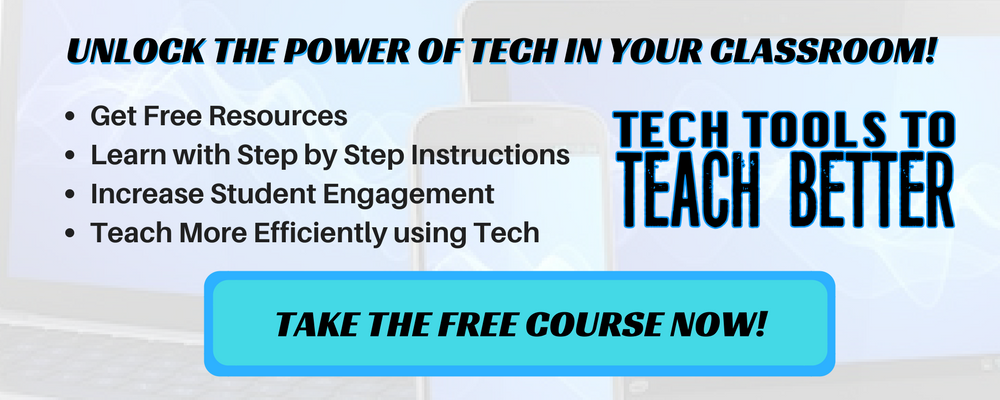
Promoting Agency with Video
This year, 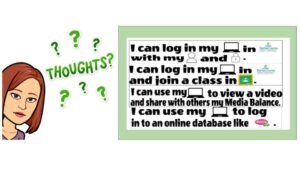 I began my work with the idea of promoting more agency on the part of all my learners. We continued using icons, but looked at other methods to empower my students. One way I did this was by adding icons to my learning targets. I even created some signs that my students could use to better understand icons.
I began my work with the idea of promoting more agency on the part of all my learners. We continued using icons, but looked at other methods to empower my students. One way I did this was by adding icons to my learning targets. I even created some signs that my students could use to better understand icons.
It was during this time that I discovered another tool to add to my toolbox: video. During technology classes, I had given my students the opportunity to work on Tony Vincent’s Shapegrams to get them prepared for our first Google Draw assignment. If you have never tried Shapegrams, Tony Vincent creates a picture made out of shapes and provides a video to guide students through the process of duplicating it.
It was amazing watching them work. Although most of my students had never used Google Drawings before, having Tony model the activity for them really empowered them.
I watched with wonder as many students revisited the video several times to help learn the new skill. Other students would work collaboratively to figure out how to accomplish some of the tasks. But after about 30 minutes as students cleaned up, many asked, “Can we do this at home too?“
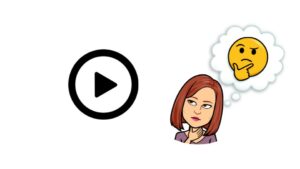 Could I use video in a similar manner to show students how to accomplish multi-step tasks? I was already using icons, but realized that I could “supersize” them by giving students access to video instruction.
Could I use video in a similar manner to show students how to accomplish multi-step tasks? I was already using icons, but realized that I could “supersize” them by giving students access to video instruction.
I have to be honest, I don’t like being on video. But when it comes to my students, I am ready to try anything, so Screencastify, here I come.
For my next project, I had students use Wixie to create digital citizenship pledges and then upload them to Flipgrid to share why their pledges were a good idea. I figured this was the perfect time to see if my hypothesis was correct.
I created two screencasts. One of how to download an image in Wixie, and another that showed how to import an image into Flipgrid and create a Flipgrid presentation. Students loved it. They loved watching me take risks and be in the video, but it also really helped them to develop agency over their work.
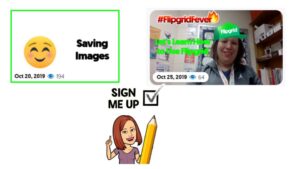
Are these two tools the only way to develop agency? No, but they left me with more opportunities to act as a guide and facilitator while my students created in technology classes, rather than just the Help Desk. But these tools don’t just work in technology classes, they can work anywhere.
Our students today are visual learners. They watch videos on YouTube to learn new things. They communicate with emojis. Why not capitalize on these strengths as we empower our students to be problem solvers? Problem solvers need to know how to use their resources to figure out possible solutions and paths forward.
A year and a half into this journey, I am still adding to my toolbox. What tools do you use to promote agency using technology? Maybe if we all share, we can add to our collaborative toolboxes and empower our students to new heights.
ABOUT DEBBIE TANNENBAUM
Debbie Tannenbaum is an Elementary School Technology Specialist in Fairfax County, VA. An educator with over twenty years of experience, Mrs. Tannenbaum is completing her second year in this role, where she supports both staff and students to integrate technology tools into instruction through both co-teaching sessions and weekly technology classes. Mrs. Tannenbaum is also an avid blogger and shares her thoughts and reflections on her website: Techy Notes. You can also find her on Twitter and Instagram at @TannenbaumTech.


